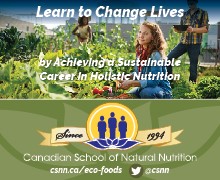WELCOME TO THE NEW FACE of Canadian medicine! These five health professionals assist patients not just through annual check-ups and drug prescriptions, but also by protecting our planetary home. Their inspiring victories – from closing coal plants to stopping the northward shipment of Toronto’s garbage – are helping to clean our air, water and land. Here are their success stories and the things you can do to promote environmental health in your own community.
WELCOME TO THE NEW FACE of Canadian medicine! These five health professionals assist patients not just through annual check-ups and drug prescriptions, but also by protecting our planetary home. Their inspiring victories – from closing coal plants to stopping the northward shipment of Toronto’s garbage – are helping to clean our air, water and land. Here are their success stories and the things you can do to promote environmental health in your own community.
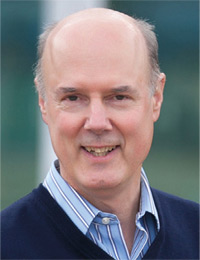 Dr. Warren Bell
Dr. Warren Bell
Dr. Warren Bell is a family physician in Salmon Arm, BC, and past founding president of CAPE. He lobbied to reduce the footprint of a new shopping centre by 60 per cent.
Why are you concerned about environmental protection?
I never was very good at respecting the division between the world of medicine and the rest of society. The best model for us to use is one of a web or network of interactions among all living creatures and their physical environment. If the environment is ill (contaminated, disrupted, reduced in biodiversity), this will eventually be reflected in human ill health or susceptibility to ill health. The medical profession still tends to see its ministrations as occurring in a bubble, outside the general flow of social and ecological life. Unfortunately, that image is false and will increasingly fail to address health issues over time.
What were your keys to success?
I was part of a group of biologists and other professionals who were horrified when SmartCentres, the largest builder of open-format shopping centres in Canada – usually anchored by Walmart – laid out plans to build in the middle of the wetlands and floodplain of the Salmon River. We formed Wetland Alliance: The Ecological Response (WA:TER) and poured an enormous amount of energy into underlining the folly of this plan.
The BC provincial government uses the professional reliance model in which private developers hire biologists to determine if they’re doing things right. Unfortunately, because developers pay biologists directly, the latter often slant their findings toward the developers’ plans. In this case, the biologists actually made gross errors in their report. This, combined with our group’s rigorously detailed presentations, forced the government to ask SmartCentres to start again.
Eventually, the shopping centre’s footprint was reduced by 60 per cent. This was the first time such a reversal was brought about in BC, and our complaints to the BC Ombudsperson resulted in a systemic review of legislation and 25 recommendations for change.
Do you have advice for others who are working on environmental protection in their community?
Start with an issue or problem that you care deeply about. Gather friends and like-minded neighbours together – don’t try and go it alone. Technical experts are especially valuable. Work out a plan for speaking to the people involved in the project or process, to various authorities (municipal, regional, provincial) and, of course, to any and all media you can interest. Then, simply keep on going. Adapt to changes. Make contact with anyone sympathetic to your work. Keep your language polite but relentless and firm, even if the other side gets rancorous. And keep going until it’s resolved or you’ve completely run out of steam. Then, make advocacy a lifelong commitment.
 Doris Grinspun
Doris Grinspun
Doris Grinspun is the CEO of the Registered Nurses’ Association of Ontario (RNAO). She was involved in campaigns to ban lawn pesticides and phase out coal in Ontario.
Why are you concerned about environmental protection?
As nurses we know that environmental protection plays a critical role in our communities’ health and wellbeing. Climate change, pesticides and other toxins are well-known causes of ill health. It is much healthier and more cost-effective to prevent pollution. Access to clean air, a safe environment and reliable and sustainable forms of electricity are not a frill but a necessity to help preserve our planet and secure the future for our children.
What was your key to success?
The key to success was coalition building based on a common vision. This, layered with the diversity and expertise of our partners, gave us the strength to persuade premiers and ministers – and counterbalance influential industrial interests. In our coalition against pesticides, our members were powerful voices in both environmental advocacy and the nursing and medical professions. Some partners were associations, like RNAO, with strong credibility in health policy and well-established relationships with all political parties. We are proud to have the added strength of our dynamic membership who, armed with knowledge and passion, were ready to mobilize and push the issues on the ground with local MPPs.
As RNAO’s CEO, I am constantly inspired by our members, board of directors and staff, whose unwavering commitment to build a better future has no boundaries. Add to this the remarkable leadership of people like Gideon Forman, Jack Gibbons of the Ontario Clean Air Alliance, Lisa Gue of the David Suzuki Foundation and RNAO’s Kim Jarvi, and you’ve got the recipe for success!
Do you have advice for others who are working on environmental protection in their community?
The strongest advice I can provide is to not work in silos, but to form powerful coalitions that are genuine and determined in intent, robust in knowledge and strategic in approach. Diversity adds enormous value to collaboration by bringing together environmental expertise, including technical knowledge, as well as strength in developing policy and mobilizing political will.
Engaging nurses and other health professionals, along with our power of conviction, to craft better environmental determinants of health in order to protect our planet and its people – this will serve us all well in overcoming the tremendous power of greed. I offer this advice and my heartfelt kudos to those who are working toward a cleaner, healthier tomorrow for Canadians and for people all over the world.
Dr. Éric Notebaert
Éric Notebaert is a Montreal physician and CAPE board member. He played a key role in the successful campaign to close Quebec’s Gentilly-2 nuclear plant.
Why are you concerned about environmental protection?
Environmental problems become health problems. The number-one health problem for humanity is climate change. Doctors have a duty to prevent such a catastrophic scenario. Just think about heat waves and pollution: More and more people are suffering and dying from these phenomena. I see them every summer in my emergency department.
What was your key to success?
The group. Many of us were involved as individuals for 10, 20, 30 years in the movement to close Quebec’s only nuclear plant. During the summer of 2008, when the Quebec government quietly announced that it was going to refurbish Gentilly-2 (G2), more than 60 NGOs in the province got together within a matter of weeks and created the Mouvement Sortons le Québec du Nucléaire (MSQN). About a dozen citizens from the area of G2 – engineers, physicians, economists, teachers and students – met frequently, and we all learned a lot from each other. Every specialist in the group tried to know his or her topic as well as they could; I read everything about nuclear power plants and health risks.
We made ourselves available to journalists who were writing more and more about the issue. We organized symposiums and conferences at universities. We invited specialists from abroad and convened debates with people from the industry and the Canadian Nuclear Safety Commission. Politicians from different parties came to the meetings. In 2008, a documentary producer, Guylaine Maroist, began following the MSQN and produced the film Gentilly Or Not To Be. When it was released in fall 2012, it had a big impact in the province: At the end of the year the newly elected government decided to close G2.
Do you have advice for others who are working on environmental protection in their community?
Pick one topic that you are ready to put your heart, your brain and your energy into.
Know your topic very well and be intellectually honest. When things are uncertain or unclear, say it. This is a matter of credibility. If you don’t know some aspects of the problem, don’t pretend you do. Nuclear power plants are complex machines. I was happy to have an engineer and a mathematician to explain many issues to the rest of us.
Find friends to work with. The bigger the task, the more important this is. People involved in different fields will help you better understand the issue.
Big things take time to do. Be patient. We worked on the closure of Gentilly-2 for more than 20 years.
Celebrate your successes, even if small – this is very important – and take care of the human beings in your group. People get burned out sometimes. They have a right to stop if they want to.
 Dr. Richard Denton
Dr. Richard Denton
Richard Denton is a physician and former mayor of Kirkland Lake, Ontario. He was a leader in the successful fight to block the shipment of Toronto’s garbage to the Adams Mine in Northern Ontario.
Why are you concerned about environmental protection?
Doctors used to treat patients for diseases. Then general practice became family practice, and we treated not only the patient but also the family, because one person’s illness may affect everyone in the family. Now, we look at the prevention of disease, and one of a doctor’s roles is being an advocate for the patient, the family and society to prevent diseases that arise from our environment.
What were your keys to success?
First, it was very much a team effort. I worked with Toronto Councillor Jack Layton and benefited greatly from his advice and help when I went to Toronto. Up here in the North, we had a core of about 10 people who worked well together.
Second, we realized that it would be a long struggle. From 1990 to 1995, we were opposing the project on our own in Kirkland Lake. Then from 1995 to 2000, we worked with the Algonquin people, farmers and environmentalists in the area. A doctor colleague ran for mayor and nearly won. A friend joined the city council in 1991, and I joined in 1994 and was mayor from 1997 to 2000.
Third, it was fun making new friends. People loved Mel the Moose, a wire-frame sculpture of a moose that we filled with recycled containers and took down to Toronto, and the “Adams Mine” song that Charlie Angus (NDP MP, Timmins-James Bay) composed. We served food – potluck – at our meetings. We were together at the Toronto City Council and in Ottawa on Parliament Hill and many members of our group set up camp on the Ontario Northland Railway and blockaded it for over a week.
Fourth, we put in a lot of work contacting other mayors on both sides of the Ontario-Quebec border, dealing with ministers both provincially and federally and using tactics such as phoning bank managers with political connections.
Fifth, it came down to money, with neither the proponents [of the dump] or the City of Toronto wanting to take on the liability of contaminated groundwater. The city put more effort into reducing, reusing and recycling instead.
Do you have advice for others who are working on environmental protection in their community?
Consult books like How to Save the World in Your Spare Time by Elizabeth May, The Troublemaker’s Teaparty: A Manual for Effective Citizen Action by Charles Dobson and A Manual for Direct Action by Martin Oppenheimer and George Lakey.
 Dr. Hilary de Veber
Dr. Hilary de Veber
Hilary de Veber is a Toronto pediatrician and vice president of CAPE. She was instrumental in the successful campaign to shut down Ontario’s coal-fired power plants.
Why are you concerned about environmental protection?
Human health is intimately connected with the health of our environment. After going into medicine I realized that doctors have powerful voices if they speak out to protect the environment. We have both scientific credibility and relationships with the community and our patients. As a pediatrician, it is much easier for me to prevent a problem than to fix one. Environmental protection is the same. I am always thinking about the world my children and my patients will inherit and that also gives me daily motivation.
What were your keys to success?
Firstly, we started a media campaign to spread understanding and concern about coal in the community. Public support gave decision makers – in this case the Liberal government – the confidence to go through with their commitment to close the coal plants.
The second, and probably the most important factor, was our partnership with several other like-minded organizations, including the Registered Nurses Association of Ontario, the Asthma Society of Canada and the Canadian Lung Association. This increased the power of our voice exponentially.
Thirdly, we remained non-partisan We made sure we had positive working relationships with members of the other parties in case they won the provincial election.
Lastly, we always made an effort to present not only a “no to coal” message, but also a “yes to renewables” message. We wanted decision makers and the public to have a confident vision of how we could still meet our energy needs without relying on coal.
Do you have advice for others who are working on environmental protection in their community?
Partnership with other individuals and organizations is very powerful. There are so many people who are concerned about the environment, but often they feel isolated and discouraged as no one else seems to care the way they do. Even I feel this way at times, especially in the medical community where the awareness of environmental issues as health issues is not yet where it needs to be. With social media and the Internet, like-minded individuals can find and support each other and strategize.
Remaining positive is also essential, as we all can be paralyzed by the daunting tasks that face us. Surrounding yourself with other people who see hope and possibility for change is important.
We are all so busy with our daily lives that protecting the environment often does not reach the top of our to-do lists, even if it is important to us. But no effort a person makes, even if it is sending one email or signing one petition, is too small. If each person does a little bit, much will be achieved.
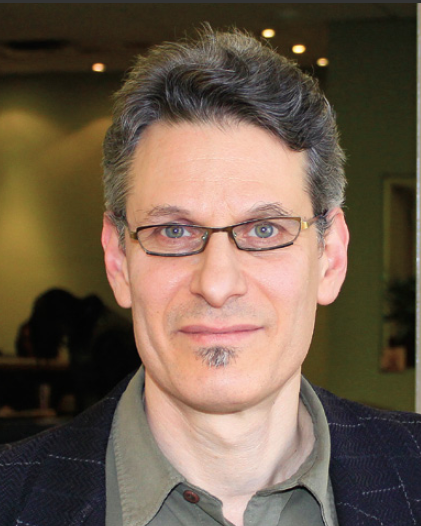
Gideon Forman is a long time peace and environmental activist.



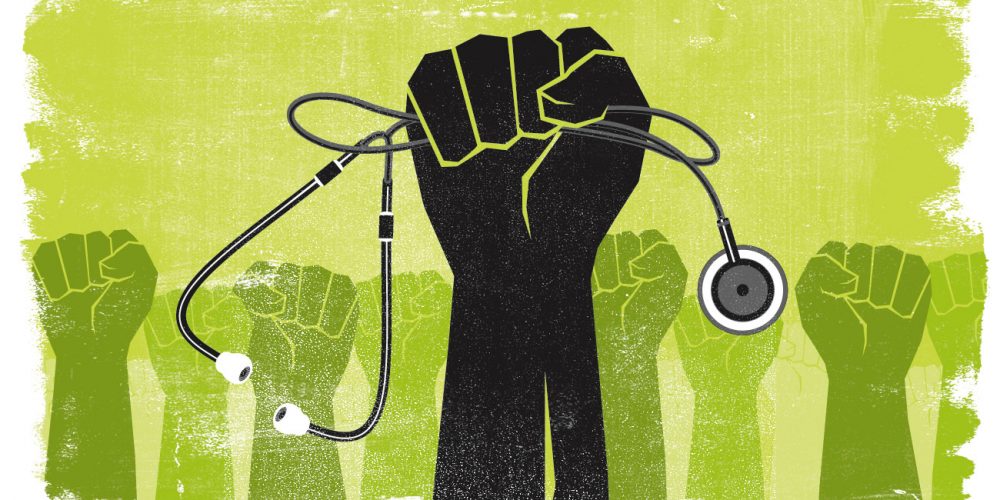



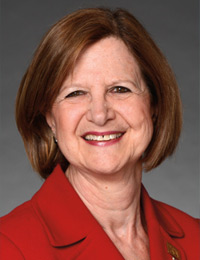
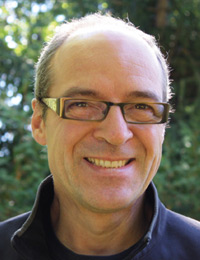
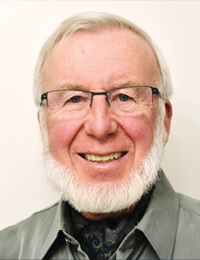 Dr. Richard Denton
Dr. Richard Denton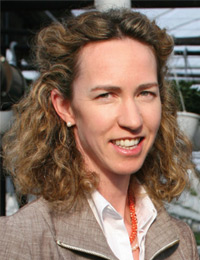 Dr. Hilary de Veber
Dr. Hilary de Veber






